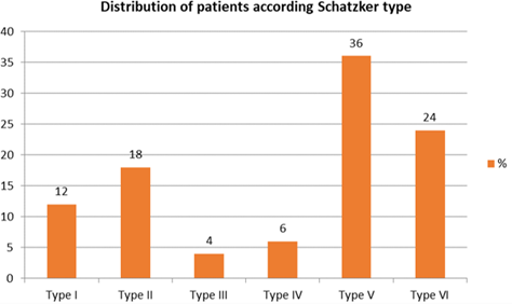Abstract
The knee is a crucial joint, as it performs various functions such as standing, walking, running, sitting etc. Tibial plateau fractures constitute 1% of overall fractures and 8% of fractures occurring in the geriatric age group. Knee injuries must be properly and adequately treated to keep the knee in a good functional state. The transition to a fast-paced lifestyle on account of rapid industrialization, urbanization and mechanization has led to a significant increase in the traumatic incidences especially polytrauma, comminuted Fractures and soft tissue injury. High-speed injury acquired in vehicular accidents and a rise in road traffic injuries together creates a forever increasing issue. The static lower extremity can be encountered by an object in motion, frequent in roadside injury, resulting in the infamous ”Bumper Fracture”. Open Reduction with Internal Fixation (ORIF) is currently recommended. Hence, a study has been conducted to learn the mode of injury, fracture pattern, outcome of open reduction and internal fixation, complications encountered and associated injuries. 50 Patients were studied prospectively and pre and post-operative evaluation were done using modified Rasmussen clinical and radiological criteria and Womac knee score. Open reduction and internal fixation provide reasonable outcome with regards to functional and radiological outcome in younger patients and type I and II fractures.
Full text article
Authors

This work is licensed under a Creative Commons Attribution-NonCommercial-NoDerivatives 4.0 International License.

